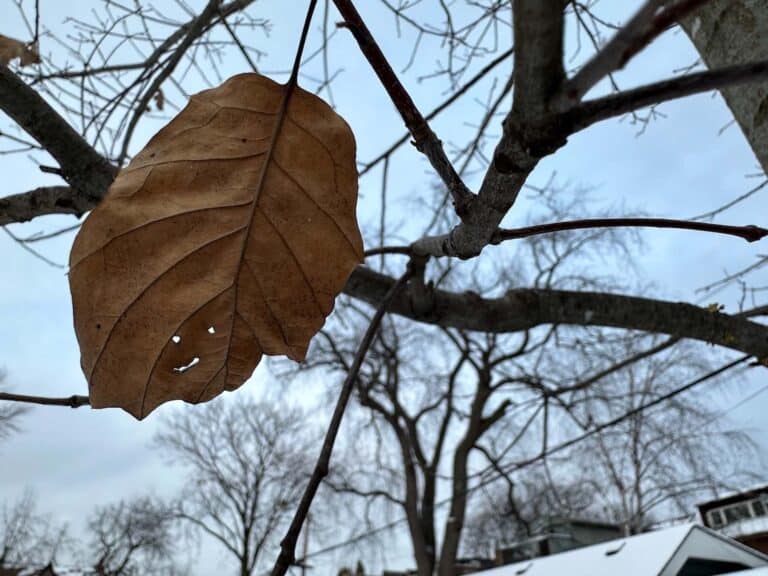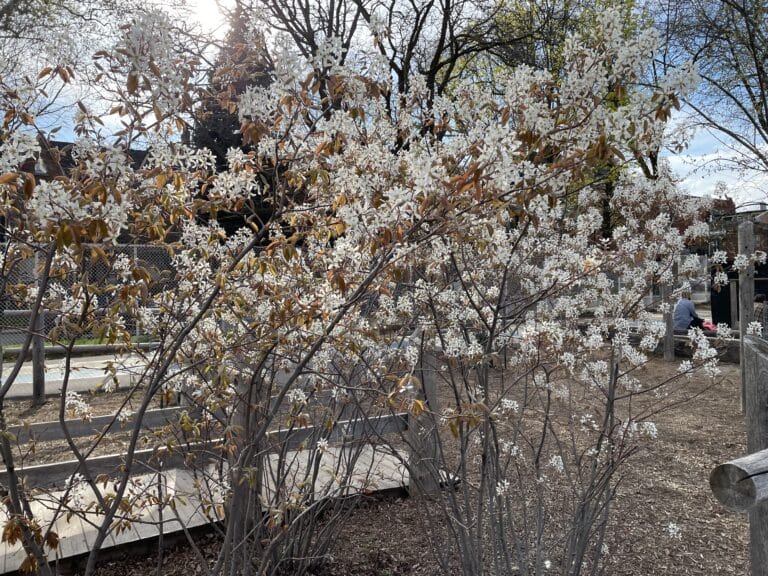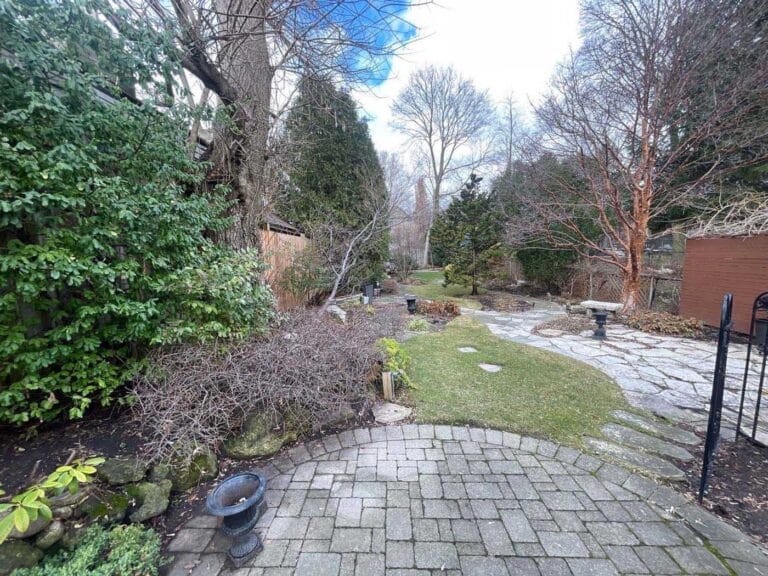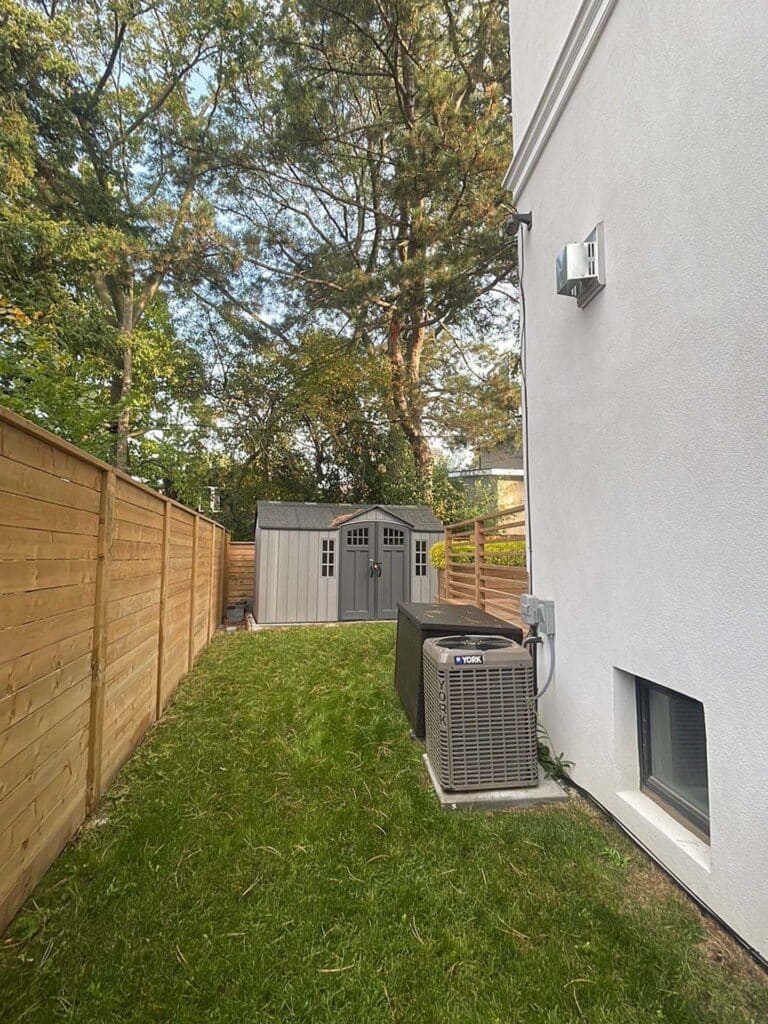Protecting Your Trees from Winter Stress: A Guide for Toronto Homeowners
Winter in Toronto isn’t just tough on people—it’s tough on trees too. From heavy snow and ice storms to fluctuating temperatures, the season brings unique challenges that can leave trees vulnerable to damage. Urban factors like road salt, compacted soil, and wildlife only add to the stress.
Proactive tree care can make a huge difference. By understanding the risks and taking preventative steps, you can protect your trees and help them thrive when spring arrives. Winter tree pruning and winter hedge care can help keep your trees healthy and your property safe.
What Causes Winter Damage to Trees in Toronto?
Toronto’s urban forest faces unique risks during winter. Heavy snow and ice as well as big changes in temperature can be very hard on trees. Even the hardiest species can be damaged by storms, early thaws, late frosts and polar vortex. Urban challenges, such as compacted soils and salt spray from roads, make matters worse.
Common Causes of Winter Tree Stress
1. Fluctuating Temperatures
Toronto’s unpredictable winters often feature sharp temperature swings. A sudden cold snap after mild weather can shock trees that haven’t acclimated, while rapid warming can lead to sunscald—damage to the bark caused by sunlight reflecting off snow.
At-Risk Species: Thin-barked trees like silver maples and young Norway maples are especially vulnerable, as are Japanese Maples and Emerald Cedar Hedges.
2. Frost Cracks and Sunscald
Frequent freeze-thaw cycles in Toronto can cause frost cracks, where the outer bark contracts faster than the inner wood, leading to splits in the trunk. Sunscald, often called “southwest injury,” occurs when winter sun warms the bark, only for it to refreeze overnight.
At-Risk Species: Maples and oaks trees are common victims of these stresses in Toronto’s harsh winter climate.
3. Heavy Snow and Ice Damage
Toronto winters often bring heavy snow and ice storms, which add significant weight to tree branches. Smaller trees, shrubs, and hedges—especially popular choices like cedars—are particularly prone to bending or snapping under the weight.
4. Salt Damage
Toronto’s extensive use of road salt to combat icy sidewalks and roads poses a serious risk to trees:
- Soil Damage: Salt leaches into the soil, dehydrating tree roots and limiting nutrient uptake.
- Salt Spray: Wind carries salt onto branches and foliage, causing discoloration, dieback, and even branch death.
High-Risk Areas: Trees near roads, sidewalks, or parking lots are most susceptible.
5. Urban Wildlife
During Toronto’s colder months, animals like squirrels, raccoons, and rabbits often turn to tree bark for food. This gnawing weakens trees and opens wounds, making them more vulnerable to pests and disease.
6. Winterburn on Evergreens
Cold winds and dry air can lead to winterburn, where needles or branch tips turn brown. This is common on evergreens like emerald cedars and boxwoods, which are popular in Toronto for privacy hedges.
7. Shallow Roots in Urban Soils
Toronto’s compacted urban soils leave many trees with shallow root systems. These roots are more prone to freezing, limiting the tree’s ability to take up nutrients in spring.
How to Minimize Winter Tree Stress in Toronto
The good news? There are practical steps you can take to protect your trees from Toronto’s winter challenges.
Steps to Protect Your Trees in Winter:
- Engage in Preventative Maintenance: Schedule a tree inspection with a certified arborist for preventative maintenance before the first snow to identify and address hazards like dead branches or weak limbs.
- Limit Salt Exposure: Use salt alternatives, like sand or gravel, near trees to minimize soil contamination.
- Gently Remove Snow: After heavy snowfall, use a broom to carefully brush off snow before it freezes solid on branches.
- Apply Mulch: In late fall, add mulch around the base of your trees to insulate the roots and prevent temperature fluctuations.
- Protect Against Wildlife: Install physical barriers or use repellents to prevent animals from damaging bark or branches.
- Prune Damaged Branches: Removing weakened or overextended branches before winter storms prevents further damage.
- Monitor Your Trees: Check for frost cracks, sunscald, or wildlife damage throughout the winter, especially after extreme weather events.
Why Winter Tree Care Matters
Toronto’s trees are integral to the city’s neighborhoods, providing shade, beauty, and environmental benefits. But without proper care, winter stress can compromise their health and safety.
Why Act Now?
- Winter is the best time for dormant-season pruning, which reduces stress on trees and prepares them for vibrant spring growth.
- Proactive care prevents costly damage to your property, such as broken branches or uprooted trees.
- Urban trees face unique challenges in Toronto’s compacted soils, making preventative measures even more critical.
How Vista Tree Management Can Help
Toronto winters may be tough, but your trees don’t have to face them alone. At Vista Tree Management, we specialize in proactive tree care that protects your landscape from winter’s harshest conditions.
What We Offer:
- Expert Winter Pruning: Our certified arborists ensure your trees are healthy, safe, and ready for spring.
- Storm Damage Prevention: We’ll remove weak or hazardous branches before they can cause harm.
- Tailored Care Plans: From mulching to wildlife protection, we provide tree care solutions customized to Toronto’s urban challenges.
Don’t wait for winter damage to take its toll. Contact us today to schedule a winter tree care consultation and keep your trees thriving.
Sources
- International Society of Arboriculture: Winter Tree Care Tips
- City of Toronto: Urban Forestry Services
- Ontario Ministry of Agriculture, Food and Rural Affairs: Winter Tree Care Guidelines








